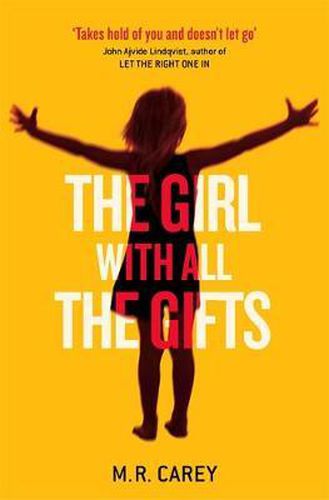Trends in Book Publishing: Stop Calling Women 'Girls'
There are always trends in books, especially in crime books. You’ll notice everything released in a single month comes from Norway. Or has a misty tree on the cover. Or, worse, has the same plot as the book you just started writing the other day and was convinced was the most original piece of literature to ever exist.
Well, please allow me to become unnecessarily enraged about a recent trend: The Girl Who Was In This Book.
I’m sure there were other books with this kind of title of before, but let’s all blame Stieg Larsson anyway along with his multi-kazillion-copy-selling Millennium Trilogy: The Girl with the Dragon Tattoo, The Girl who Played with Fire and The Girl who Kicked the Hornet’s Nest. Fine, they’re part of a trilogy; I suppose it’s understandable that they share similar titles.
But then what happened?
This is what happened: The Girl with a Clock for a Heart, The Girl with all the Gifts, The Girl on the Train, The Girl who Wasn’t There, The Girl in 6E, and so many more that you’ll get bored before I finish listing them. That’s what a successful series will get you. Endless imitators, not of content, but of titles. Because in all seriousness, these books aren’t cheap imitations of Larsson, or of anything. They’re really good reads in their own right.
The Girl with all the Gifts is an unnerving zombie/vampire (zompire?) thriller with an ending that made me almost chew the book in a frenzy of emotion. The Girl with a Clock for a Heart is a shifty little number with disorienting characters and a whole lot of twisty moments. I almost threw The Girl who Wasn’t There across the room when I saw it, so frustrated I was with the title alone, but instead was caught up in a completely original and bananas plotline that I immediately tried to share with everyone who came near me.
What bothers me about this particular kind of title is the word ‘girl’. Only in The Girl with All the Gifts is the girl actually a youth of some kind. The other women these books are named after are all adults, yet here they are, consistently referred to as girls. Larsson’s prickly twenty-something mega-hero Lisbeth Salander fights the whole way through her series to be an adult deemed capable of making her own decisions yet the titles don’t even give her the benefit of the doubt. In contrast, could you imagine Raymond Chandler’s incredible Phillip Marlowe books with names like ‘The Boy who Looked at Gams’? Or Poirot starring in ‘The Boy with the Grey Matter’?
No, it’s just women left to be infantilised and nameless in covers. The Boy in the Striped Pyjamas is indeed a boy; The Boy who Could Tickle Clouds, who spends the majority of the book as a growing boy before becoming an adult, getting up to shenanigans, losing his dad and making me cry. I hunted for more, but they seemed, essentially, to be about children.
Book fashions come and go, but like the mullet, this one needs the chop. Women are not girls.



